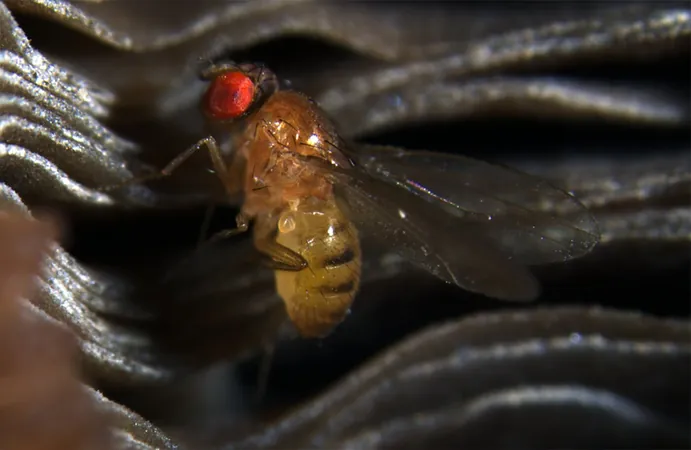
Groundbreaking Discovery: The X Chromosome That Plays Both Sides in Fruit Fly Inheritance
2025-05-13
Author: Emily
Scientists Uncover a ‘Selfish’ X Chromosome in Fruit Flies
A stunning new study reveals a unique "selfish" X chromosome in the fruit fly Drosophila testacea that distorts inheritance patterns in both sexes—sperm and eggs alike!
Graeme Keais, a Ph.D. student from the University of British Columbia (UBC), and lead author of the research published in PNAS, emphasizes the significance of this finding: "For nearly a century, scientists have documented these selfish genes in males, but we've never seen one that cheats in both males and females before."
The Mechanics of Inheritance: A Battle of Chromosomes
Chromosomes are the vessels of genetic information, meticulously passing DNA from parents to offspring during cell division. Typically, during meiosis—the process that produces eggs and sperm—chromosomes have an equal shot at being handed down. However, certain threads of DNA, known as meiotic drivers, manipulate the rules of genetics to elevate their chances of survival.
How the X Chromosome Pulls the Strings
A collaborative research effort from UBC and the University of Victoria identified that this particular X chromosome effectively eliminates Y-bearing sperm, ensuring its dominance in the next generation. In females, this chromosome is preferentially incorporated into the egg.
Dr. Steve Perlman, a biologist at the University of Victoria and leader of the research team, notes, "The ability to hijack meiosis in both male and female cells is striking, showcasing the astonishing diversity of selfish genetic elements and their significant impact on genomic architecture."
The Supergene: A Genetic Marvel
This intriguing selfish X chromosome is no ordinary chromosome; it functions like a supergene. This means it contains a substantial block of DNA that refrains from mixing with its conventional X chromosome counterpart. Consequently, it's nearly double the size of a typical X chromosome, accumulating repetitive DNA segments that may enhance its cheating behavior in female reproduction.
The research indicates that these non-mixing regions, like supergenes, may play a crucial yet underestimated role in the evolution of selfish genes, reshaping our understanding of genetic conflict.
Implications for Evolution and Genetics
This groundbreaking discovery not only sheds light on the complexities of inheritance but also opens up new avenues for exploring how genetic conflicts can shape the evolution of species. The dual capability of this X chromosome could have far-reaching consequences in the field of genetics.









 Brasil (PT)
Brasil (PT)
 Canada (EN)
Canada (EN)
 Chile (ES)
Chile (ES)
 Česko (CS)
Česko (CS)
 대한민국 (KO)
대한민국 (KO)
 España (ES)
España (ES)
 France (FR)
France (FR)
 Hong Kong (EN)
Hong Kong (EN)
 Italia (IT)
Italia (IT)
 日本 (JA)
日本 (JA)
 Magyarország (HU)
Magyarország (HU)
 Norge (NO)
Norge (NO)
 Polska (PL)
Polska (PL)
 Schweiz (DE)
Schweiz (DE)
 Singapore (EN)
Singapore (EN)
 Sverige (SV)
Sverige (SV)
 Suomi (FI)
Suomi (FI)
 Türkiye (TR)
Türkiye (TR)
 الإمارات العربية المتحدة (AR)
الإمارات العربية المتحدة (AR)